It’s an inescapable truth of the working world that managers and jobs can keep some workers engaged, some or most of the time. However, they can’t keep all workers engaged all the time.
Whether you’re a manager or report to one, you’re probably familiar with workers who simply aren’t engaged or enthusiastic about work.
Since employee engagement has numerous benefits for workers and their employers, it’s important to understand why people are or aren’t engaged and what managers or companies can do to change things.
Polly surveyed 289,870 people worldwide over 12 months, ending May 15, 2024, to find out whether they were engaged, why they were engaged, what would make them more engaged, and to learn more about their demographics. Here’s what the statistics reveal and how that data relates to global mobility.
Index
- More than 80% of workers are engaged in their job
- Nearly a third of employees are engaged because they feel valued
- Good work-life balance would make 36.5% of people more engaged in their job
- Almost 40% of workers agree employers could offer remote work to enhance flexibility
- More than 25% of respondents were aged 65 or older
- Almost 65% of respondents were in the USA
- The majority of respondents were women
- Almost 40% of respondents earn between $120,000 and $200,000
- About the data
More than 80% of workers are engaged in their job
Of the 289,870 employees surveyed by Polly in various countries, the majority said they are engaged in their jobs. We’ve unpacked the results.
With 81% of people saying they are engaged in their jobs versus only 19% who said they weren’t, there’s little debate about how the majority of Polly’s study felt.
However, these results are more encouraging than a 2023 Gallup poll, which found that only 23% of people worldwide were engaged in their jobs.
Gallup poll fine-tuned these stats by highlighting those for the United States and best-practice companies, with 33% of American workers and 70% of best-practice company employees saying they were engaged.
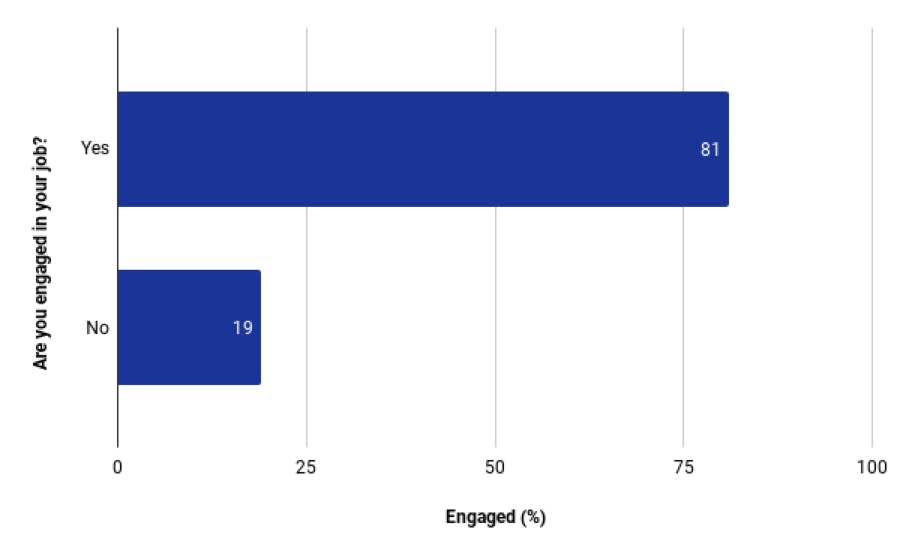
While this finding is encouraging, there is still room for improvement. HR teams must dig deeper to understand the disconnect within their company and work with employees to ensure higher engagement rates. The following data provides more insight into that potential process.
Recommended reading: 3 global mobility solutions for your HR team
Nearly a third of employees are engaged because they feel valued
When Polly looked at why employees were engaged in their jobs, they discovered that feeling valued was the most common reason. This data surveyed 1,771,669 people to get their responses.
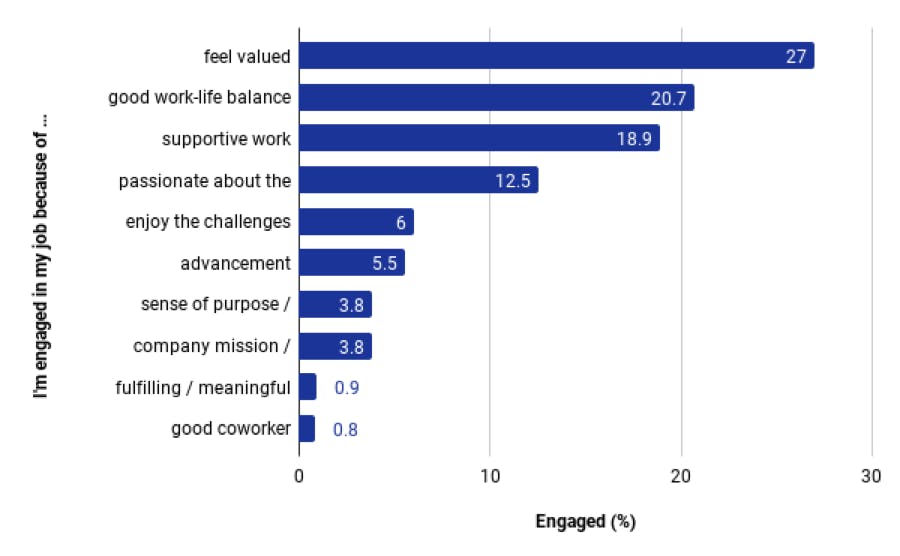
Consider the following:
- Topping the list at 27% were those who said they were engaged at work because they felt valued.
- At 20.7%, a good work-life balance was the next biggest reason for employee engagement.
- A total of 18.9% of employees said they were engaged because of supportive work, while 12.5% said they were passionate about their work.
- Just 6% said they were engaged because they enjoy their jobs' challenges, and 5.5% said they were engaged because it would lead to advancement along their career path.
- For 3.8% of respondents, their employee engagement was due to the sense of purpose their jobs give them.
- Another 3.8% of respondents’ engagement was based on their commitment to the company mission.
- Only 0.9% of respondents said they were engaged because their jobs were fulfilling or meaningful — while 0.8% of respondents’ employee engagement was due to either being good coworkers or others being good coworkers.
This data is critical for HR teams, as this understanding can help drive more effective policies. Creating a company that fosters greater employee engagement means offering employees unique opportunities that benefit them and the company, including unique global mobility services, such as the ability to work abroad. This strategy can unlock business opportunities but is also attractive to employees. It's a win-win.
Related: The new world of HR and global mobility
Good work-life balance would make 36.5% of people more engaged in their job
Polly’s analysis of the responses of 2,664,930 people found that a good work-life balance would encourage the largest group to be more engaged at work.
Here’s what else the data shows.
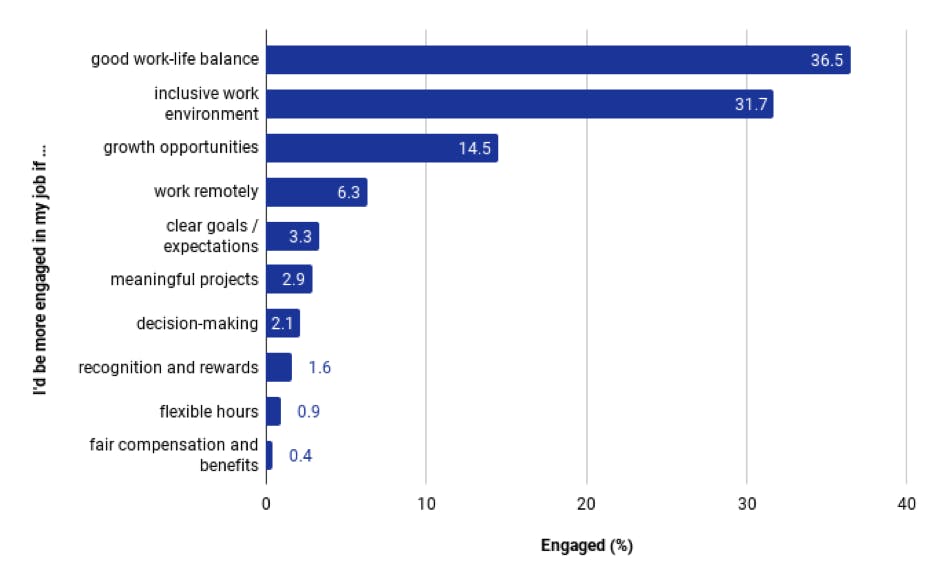
An inclusive work environment, growth opportunities, and the ability to work remotely followed.
Here is a breakdown of the findings:
- A good work-life balance is the biggest motivation for workers, with 36.5% saying that they’d be more engaged if this were a reality. These findings support the benefits of workations.
- A total of 31.7% of respondents said a more inclusive work environment would lead to higher engagement levels, while 14.5% said they would be more engaged if they had growth opportunities.
- For 6.3% of employees, the ability to work remotely would boost engagement.
- Just 3.3% of respondents said they would have a higher level of employee engagement if they had clear goals or expectations at work.
- 2.9% said they would be more engaged if involved in meaningful projects, while 2.1% said involvement in decision-making would encourage them to be more engaged.
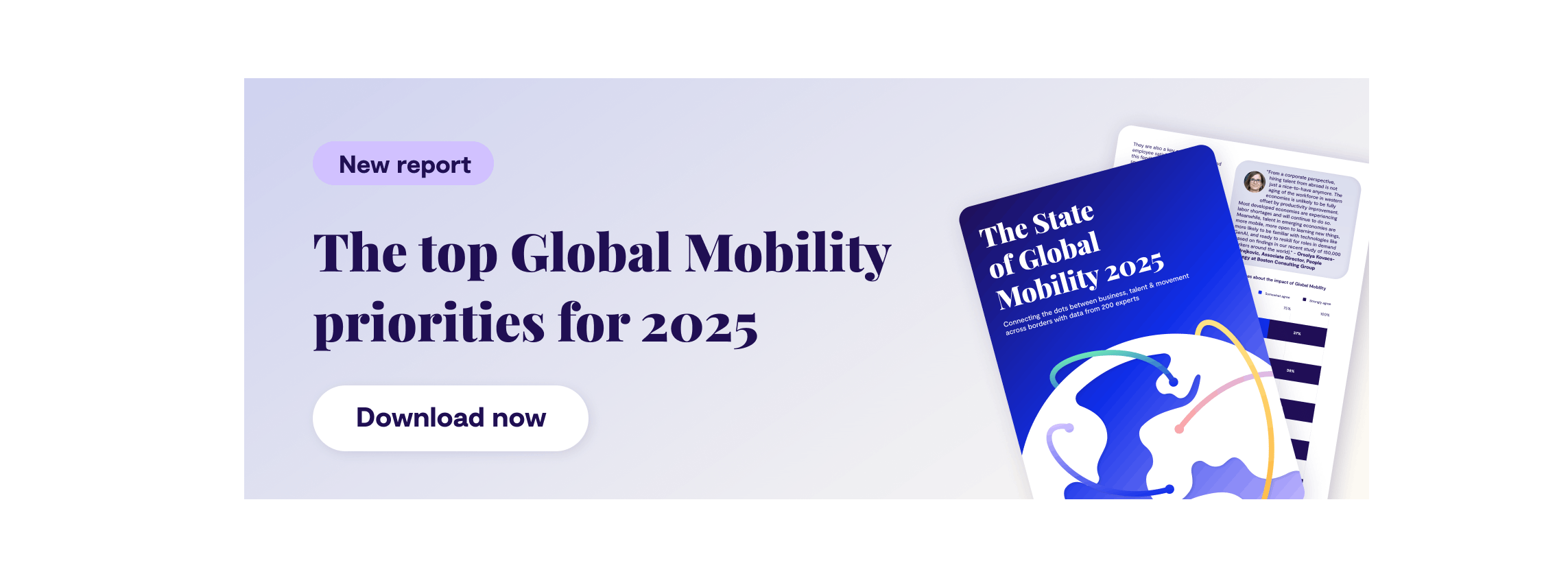
Recognition and rewards also clearly go a long way in stimulating employee engagement. These findings tie in with the above statistic that 27% of people said they were engaged at work because they felt valued as employees.
The findings also underscore the importance of creating appealing workplace policies such as creating an inclusive environment, offering employees a certain level of flexibility (again, the power of workations), clear communication, including employees in decision-making, and compensating them fairly.
Benefits and rewards that recognize employees’ contributions and incentivize them to increase their motivation also come up several times. These rewards and benefits increase engagement, boost productivity, recognize above-average performance, inspire collaboration, and attract and retain workers.
Related: Mobility as a benefit: should it be part of your new HR policy?
There are numerous possibilities for employers' rewards and incentives. Some examples of rewards include:
- Bonuses
- Extra paid time off
- Team retreats
- Workations
- Flexible hours
- Personal fitness classes
- Office happy hours
- Gift cards
- Concert or sporting event tickets
Tuition reimbursement and opportunities for professional development, such as short courses or global mobility programs, are additional ways to increase engagement and reward employees.
Almost 40% of workers agree employers could offer remote work to enhance flexibility
Polly’s data looked at the top six ways 786,116 people thought their employer could offer more flexibility. The graph below shows us which options are preferred.
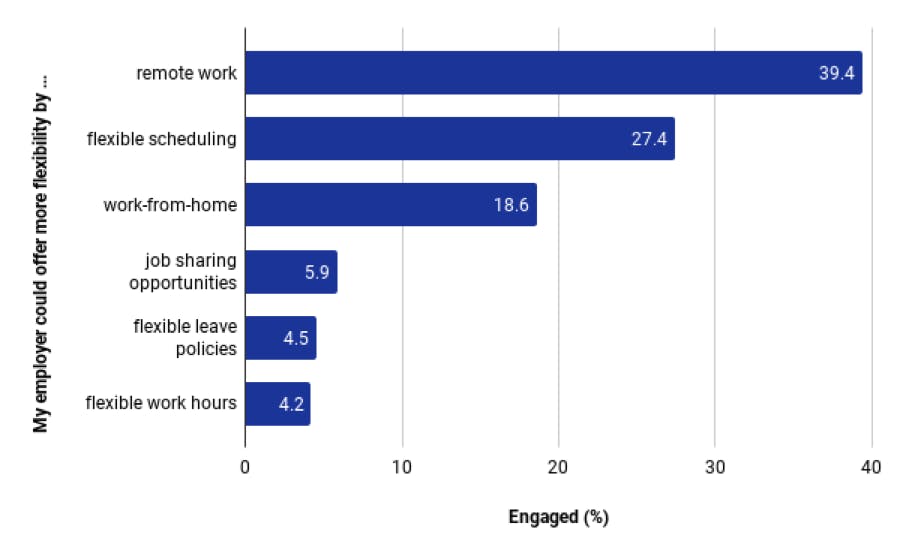
Of those surveyed, 39.4% agreed that remote work was best for an employer to offer more flexibility.
The second most popular response, at 27.4%, was from those who said their employers could offer more flexibility through flexible scheduling. These respondents did not say whether they work at an office, another workplace, or remotely. Either way, flexibility with scheduling is important to them.
Here are additional findings:
- Working from home was a flexible solution suggested by 18.6% of respondents.
- For 5.9% of respondents, more flexibility from their employers could come from job-sharing opportunities.
- For 4.5% of workers, flexible leave policies were how their employers could offer more flexibility at work, and 4.2% reported more flexible work hours.
The survey results mentioned both working from home and remote work, so you might wonder what the difference is between the two. The distinction between working from home and working remotely is that remote work could allow workers to become digital nomads, whether they travel to other cities or countries and work remotely from there.
You could take this a step further by offering flexibility and development opportunities to employees through assignments, placements, or relocations internationally. In other words, a strong global mobility strategy can become the driving force behind greater employee engagement.
A 2021 Deloitte survey contained a few interesting insights into global mobility:
- 51% of organizations named increased employee engagement, flexibility, and well-being among their benefits
- 72% of executives said that people’s ability to adapt, reskill, and take on new roles was the most or second most important factor for navigating disruptions in the future.
- 41% of executives said that reskilling, upskilling, and mobility were some of the most important actions they can take to transform work.
The study also found that 59% of millennials, who will comprise 75% of the workforce by 2025, are willing to work abroad.
In addition to increased engagement, flexibility, and well-being, the benefits of global mobility include access to global talent, greater profitability, greater cultural awareness among employees, knowledge sharing, innovation, higher levels of employee retention, satisfaction, and morale, and making faster hires.
More than 25% of respondents were aged 65 or older
Based on the responses from1,771,669 people, Polly’s data revealed that those over 65 were the most engaged in the workplace. Here’s how the age groups performed.
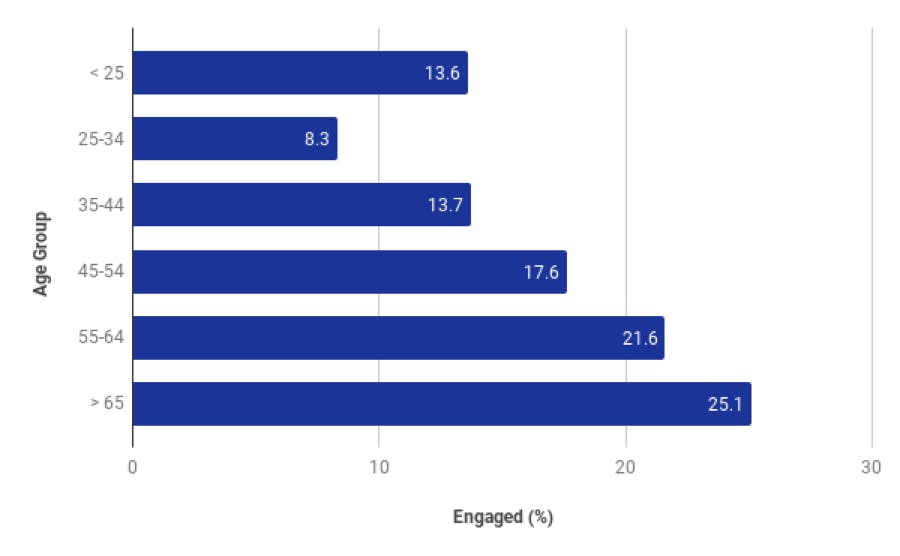
The greatest number (25.1%) of respondents fell into the over 65-year category, which is interesting as, in many countries, this is an age when people have retired.
Engagement level by age group declined by age all the way from 21.6% in the 55-64 age group until it hit 8.3% with those aged 25-34. After this, respondent rates rallied, and there were 13.6% of people who fell into the under 25 category.
According to a Gallup poll, the number of baby boomers (born between 1946 and 1964) engaged at work has increased since March 2020. However, the number of engaged Gen Xers (born between 1965 and 1979), millennials (born between 1980 and 1988), and Gen Z (born in 1989 or later) has decreased.
Almost 65% of respondents were in the USA
Polly’s data reveals that most people in the 1,771,669 sample study were from the United States. The graph below outlines how the countries contributed.
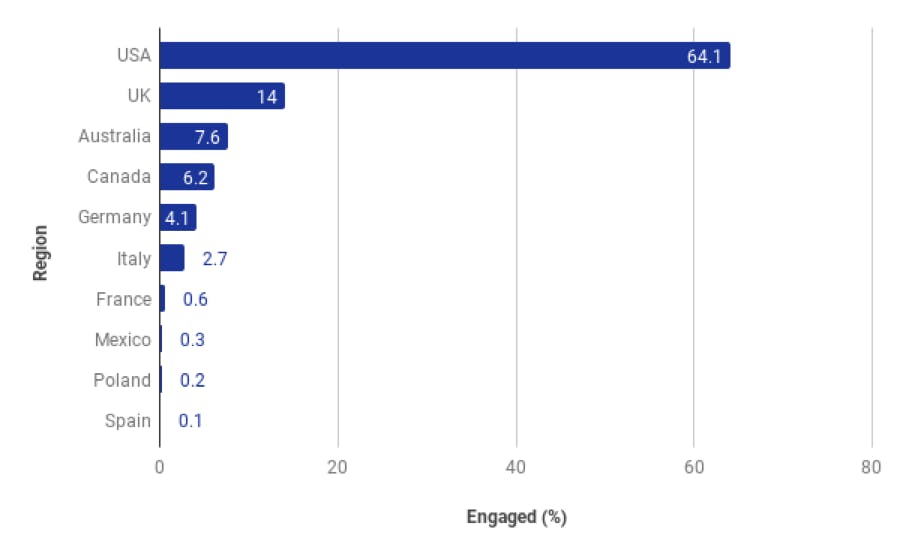
A whopping 64.1% of people who explained why they were engaged employees were from the USA. This is just over 50% more than the UK, which took second place with 14%. Almost halving that again were 7.6% of respondents from Australia, 6.2% in Canada, 4.1% in Germany and 2.7% from Italy. In descending order, France, Mexico, Poland, and Spain all registered below the 1.00%.
Interestingly, another Gallup poll revealed that the USA, Canada, and Latin America had the highest levels of employee engagement (31%). At 13%, the European region had the lowest employee engagement.
The majority of respondents were women
More women than men engaged in Polly’s survey — the findings are below.
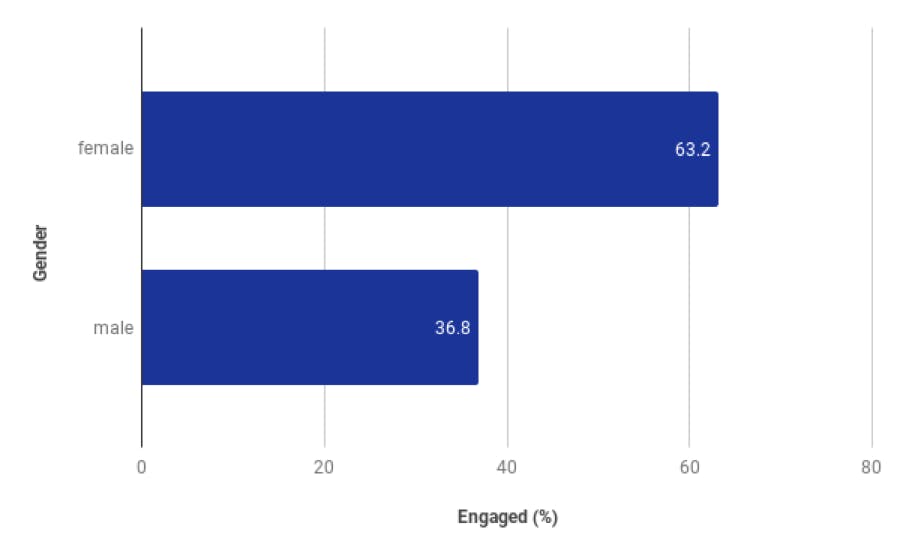
Of the 1,771,669 respondents who revealed their reasons for employee engagement, 63.2% identified as female, and 36.8% identified as male.
These response levels are somewhat different from an Enterprise Engagement poll, which revealed similar engagement levels for male and female employees. However, while women were more likely to say they were fully engaged, a much higher percentage of men said they were moderately engaged.
Almost 40% of respondents earn between $120,000 and $200,000
Polly’s data of the 1,771,669 respondents who responded about why they are engaged at work are in the $120,000 to $200,000 income group.
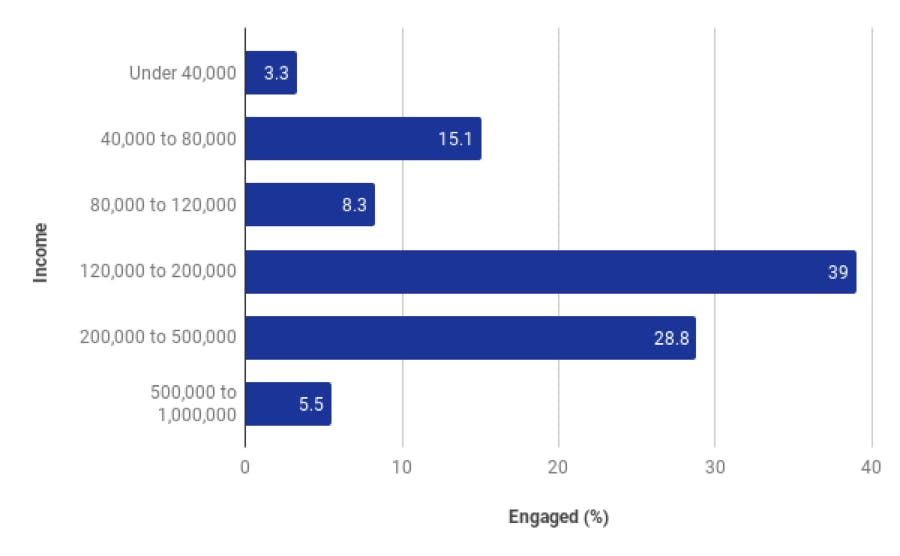
This is how earnings versus engagement levels align:
- 28.8% of respondents earn between $200,000 and $500,000
- 15.1% are in the $40,000 to $80,000 income bracket
- 8.3% of respondents earn $80,000 to $120,000
- 5.5% of respondents were in the $500,000 to $1 million income bracket, while 3.3% earned $40,000 or less.
There’s a link between fair remuneration, benefits, incentives, and employee engagement, as these all play an important role in building trust between employers and employees. If your employees feel you don’t value them, they won’t trust you to make other important decisions. They also are likely to have a lower level of employee engagement and retention.
While Polly’s data shows encouraging levels of employee engagement, those levels could be better. The key here is to learn from the engaged employees and find various ways to encourage and incentivize those who aren’t. Get it right, and you, your company, and your employees will reap the benefits.
About the data
The data used from Polly in this article was based on independent samples of 289,870 people taken from social media platforms such as TikTok, X, and Reddit. The data spanned 12 months, ending 15th May 2024, and was based on global responses.
The responses were collected and analyzed to produce outcomes within a 90% confidence interval and 5% margin of error, and engagement estimated the number of people participating in the location.
The demographics were determined using many features, including name, location, and self-disclosed description. Privacy was preserved using k-anonymity and differential privacy. Results are based on what people globally describe online—questions are not posed to the sample group.





